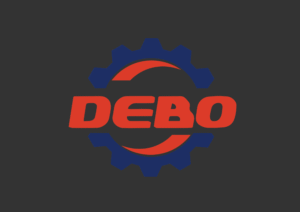Aluminum fasteners are increasingly used in modern industries due to their lightweight, high strength-to-weight ratio, excellent corrosion resistance, and electrical conductivity. Common in aerospace, automotive, electronics, renewable energy, and machinery manufacturing, aluminum offers significant benefits over steel or stainless steel in terms of weight reduction and cost efficiency.
However, aluminum also has limitations, such as low hardness, susceptibility to surface wear, and potential corrosion in aggressive environments. Therefore, surface treatment is essential to improve performance, durability, and aesthetics.
In this article, we explore the most common surface treatments for aluminum fasteners, including their advantages and disadvantages, to help engineers, manufacturers, and buyers choose the right process for their applications.
Why Do Aluminum Fasteners Require Surface Treatment?
While aluminum naturally forms a thin oxide layer in air, this passive film is not always sufficient for demanding applications. Without surface treatment, aluminum fasteners can experience:
- Surface corrosion and pitting in salt or acidic environments
- Poor wear resistance and surface deformation
- High friction and galling during assembly
- Unattractive surface appearance
- Inconsistent electrical conductivity or unwanted insulation
Surface treatments improve the functionality, appearance, corrosion protection, and mechanical reliability of aluminum fasteners.
Common Surface Treatment Methods for Aluminum Fasteners
Ⅰ. Anodizing
Process: Electrochemical oxidation of the aluminum surface to form a stable, dense aluminum oxide layer.
Advantages:
- Strong corrosion resistance
- Enhanced surface hardness and durability
- Decorative appearance with multiple color options (black, silver, red, blue)
- Electrically insulating
- UV and weather resistant
Disadvantages:
- Adds thickness to the part (typically 5–25μm)
- Potential for color variation between batches
- Not suitable where electrical conductivity is required
- Higher cost than basic coatings
Best for: Electronics housings, aerospace components, consumer goods, and visible fasteners.
Ⅱ. Hard Anodizing (Hardcoat Anodizing)
Process: A more aggressive anodizing process carried out at low temperatures and high current density, producing a thicker and harder oxide layer (>25μm).
Advantages:
- Extremely high surface hardness (up to HV400+)
- Excellent wear and corrosion resistance
- Strong adhesion between oxide layer and base material
- Withstands heavy-duty mechanical and environmental stress
Disadvantages:
- High processing cost
- Limited color choices (typically gray or black)
- Poor thermal and electrical conductivity
- Longer lead time
Best for: Defense, heavy machinery, aerospace structural components, sports equipment.
Ⅲ. Electroless Nickel Plating
Process: A chemical reduction process that deposits a uniform layer of nickel-phosphorus alloy on the aluminum surface without using electricity.
Advantages:
- Excellent corrosion and wear resistance
- Uniform coating even on complex geometries
- Improves surface hardness and lubricity
- Maintains electrical conductivity
Disadvantages:
- Higher cost compared to anodizing
- Limited decorative appeal (gray metallic finish)
- Requires strict process control
- Environmental compliance must be addressed
Best for: Electronic components, connectors, precision fasteners requiring conductivity and corrosion protection.
Ⅳ. Sandblasting / Shot Peening
Process: High-speed impact of abrasive particles (sand or metal shot) to clean and roughen the aluminum surface.
Advantages:
- Removes oxides, contaminants, and scale
- Improves coating adhesion in subsequent treatments
- Increases friction coefficient for anti-loosening effect
- Cost-effective and fast processing
Disadvantages:
- Roughens the surface (not suitable for aesthetic parts)
- No direct corrosion protection
- May damage soft aluminum if not carefully controlled
Best for: Pre-treatment before anodizing or coating, industrial-grade fasteners, automotive hardware.
Ⅴ. PTFE / MoS₂ Coating (Dry Film Lubricant)
Process: Application of a thin dry film lubricant such as PTFE (Teflon) or MoS₂ (Molybdenum Disulfide) to reduce friction and prevent galling.
Advantages:
- Reduces friction and prevents thread seizure
- Improves torque-tension control during assembly
- Optional color coding for identification
- Provides some corrosion resistance depending on material
Disadvantages:
- Coating wears off with repeated use
- May interfere with thread engagement if too thick
- Not suitable for high-temperature environments
Best for: Assembly applications in automotive, electronics, and motion control systems.
Ⅵ. Chemical Passivation
Process: Treatment using alkaline or acidic solutions to remove contaminants and promote the formation of a stable oxide layer.
Advantages:
- Improves corrosion resistance at low cost
- Preserves natural aluminum appearance
- No impact on dimensions or thread engagement
- Simple and eco-friendly
Disadvantages:
- Weaker protection compared to anodizing or plating
- No significant improvement in hardness or aesthetics
- Limited long-term durability in harsh environments
Best for: General-purpose aluminum fasteners in mild environments.
Surface Treatment Comparison Table
| Treatment Method | Corrosion Resistance | Wear Resistance | Cost | Aesthetic Appeal | Lubrication | Conductivity |
| Anodizing | ★★★★☆ | ★★★☆☆ | Medium | ★★★★☆ | No | No |
| Hard Anodizing | ★★★★★ | ★★★★★ | High | ★★☆☆☆ | No | No |
| Electroless Nickel | ★★★★☆ | ★★★★☆ | High | ★★☆☆☆ | No | Yes |
| Sandblasting | ★★☆☆☆ | ★★☆☆☆ | Low | ★☆☆☆☆ | No | Yes |
| PTFE / MoS₂ Coating | ★★☆☆☆ | ★★☆☆☆ | Medium | ★★★☆☆ | Yes | Depends |
| Chemical Passivation | ★★☆☆☆ | ★☆☆☆☆ | Low | ★★☆☆☆ | No | Yes |
How to Choose the Right Surface Treatment for Aluminum Fasteners?
When selecting a surface treatment method for aluminum fasteners, consider the following factors:
- Corrosion Environment: Choose anodizing or electroless nickel for marine, outdoor, or chemical exposure.
- Mechanical Wear: Use hard anodizing or nickel plating where wear resistance is critical.
- Assembly Performance: Apply PTFE/MoS₂ coatings when torque control or anti-galling is needed.
- Electrical Requirements: Electroless nickel or passivation for conductive surfaces.
- Cost Constraints: Sandblasting or chemical passivation for low-cost, high-volume parts.
- Visual Appearance: Anodizing for consumer-facing products requiring attractive finishes.
Conclusion
Aluminum fasteners are widely used across industries for their lightweight and corrosion-resistant properties. However, they benefit greatly from proper surface treatment to enhance durability, reduce friction, improve aesthetics, and extend service life.
Each surface treatment process offers unique benefits and limitations. By understanding the advantages and disadvantages of anodizing, hard anodizing, nickel plating, dry film lubricants, sandblasting, and passivation, decision-makers can select the most appropriate method for their application.


